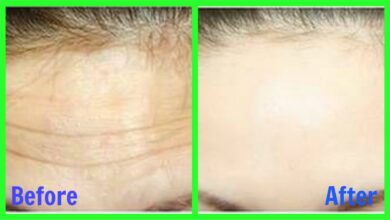Cryosurgery uses extreme cold in the form of liquid nitrogen to freeze and destroy abnormal skin cells. Cryosurgery is generally safe, and it requires no anesthesia and little recovery time. Some potential side effects are hypopigmentation, bleeding, and blistering. Cryosurgery rarely causes scarring.
Fading cream, also called bleaching cream, is available both over the counter and by prescription. Many fading creams contain hydroquinone, an ingredient thought to suppress melanin production and lighten darkened areas of skin.
Topical hydroquinone cream may cause:
- inflammation
- dryness
- burning
- blistering
- skin discoloration
In 1982, the U.S. Food and Drug Administration (FDA) considered bleaching products that contained up to 2 percent hydroquinone as generally safe and effective. In 2006, new evidence indicated hydroquinone may cause cancer in rats and result in skin darkening and disfiguration. This led the FDA to nominate hydroquinone for further study under the National Toxicology Program (NTP).
Retinoid cream is a vitamin A compound. It’s used to improve sun-damaged skin and lighten freckles. According to a 2014 review, retinoids may offer photoprotection by absorbing ultraviolet B radiation. This may help prevent new freckles from forming.
Retinoid creams are available with or without a prescription. Common side effects are:
- redness
- dryness
- skin irritation
- peeling
- sensitivity
A chemical peel uses a chemical solution to exfoliate and peel off areas of damaged skin. To remove freckles, a moderate skin peel containing glycolic acid or trichloroacetic acid penetrates the skin’s middle layers. Once damaged skin is removed, new skin is generated.
Chemical peels may temporarily cause:
- stinging
- peeling
- redness
- irritation
- crusting
- swelling
According to the American Society for Dermatologic Surgery, moderate skin peels take up to two weeks to heal. You’ll need to soak your skin daily and apply topical ointment. You’ll also need to take a prescription antiviral for up to two weeks, and avoid the sun until your skin has healed.
There are several natural remedies people swear by to get rid of freckles. None are scientifically proven. Still, most are unlikely to cause harm when used in moderation.
These natural remedies include:
Lemon juice: Apply lemon juice directly to your skin with a cotton ball, and then wash it off. Lemon juice is thought to lighten skin.
Honey: Combine honey with salt or sugar to make a scrub. Honey may help lighten pigmentation.
Buttermilk: Apply buttermilk directly to your skin. You should leave it on for 10 minutes before rinsing it off with warm water. You can also create a mask by combining buttermilk with oatmeal. Buttermilk has lactic acid, which could potentially help lighten your freckles.
Sour cream: Apply sour cream directly to your skin, and then wash it off after a few minutes. Like buttermilk, sour cream contains lactic acid.
Yogurt: Apply yogurt directly to your skin and leave it on for a few minutes. Yogurt also contains lactic acid.
Onion: Rub the onion over your skin, and then rinse your skin in warm water. Onion can act as an exfoliate and may help lighten spots.
If you experience any irritation, stop using the remedy.
Your skin contains cells called melanocytes that produce the pigment melanin. Melanin helps protect your skin from the sun’s ultraviolet rays. Sun exposure encourages melanocytes to produce more melanin. Freckles are a build-up of melanin on your skin’s outer layer.
Most people with large numbers of freckles have fair skin, although anyone can get them. Even though fair-skinned people normally produce less melanin than those with darker skin, their melanocytes produce more melanin during sun exposure.
Some freckles are in it for the long haul. Others are most prominent in the summer due to increased sun exposure, but will fade during winter or by avoiding direct sunlight. Freckles that are hereditary may diminish as you age. Freckles caused by sun damage tend to increase with age.
Freckles are noncancerous, but they may be confused with skin cancer. Excessive sun exposure is a risk factor for both freckles and melanomas. Melanoma is more common in people with fair skin or freckles than in those with dark skin.
If you notice changes in size, color, or shape of a freckle, see your doctor or dermatologist. They’ll be able to determine whether it’s a reason for concern.
Freckles are common and benign, yet many people want to get rid of them for cosmetic reasons. Invasive remedies such as laser therapy and chemical peels are effective, but require extensive healing time and may cause serious side effects.
If you want to send your freckles packing, talk to your dermatologist to determine the best removal method for you. No matter what method you choose, it’s important to practice safe sun care afterward to help prevent new freckles




